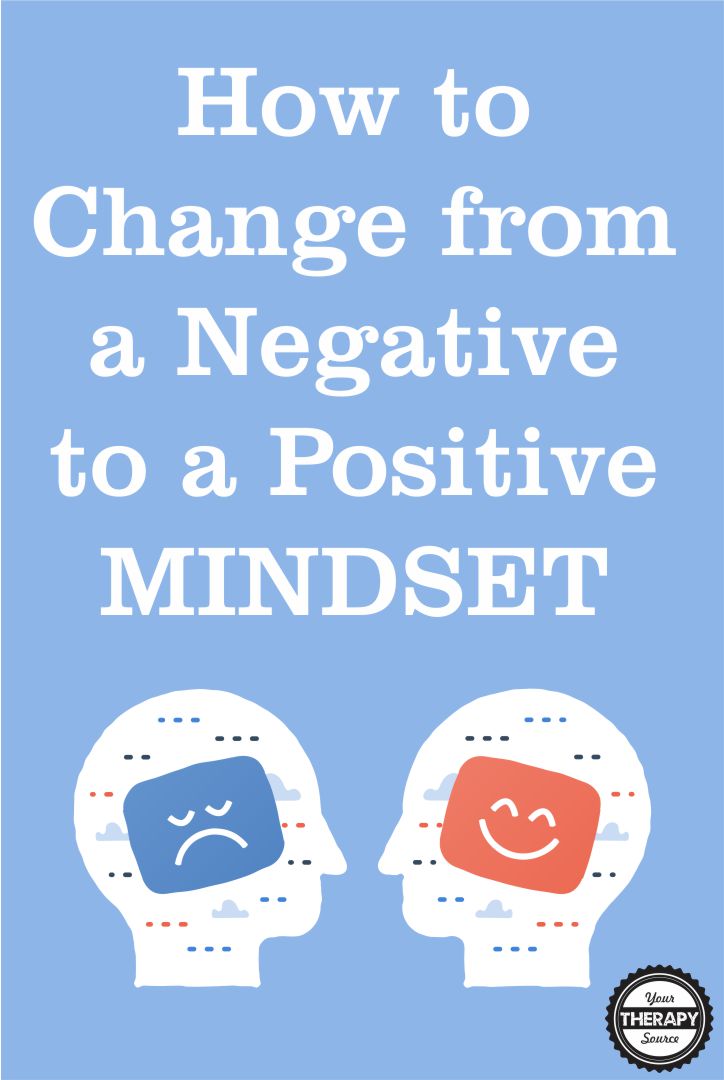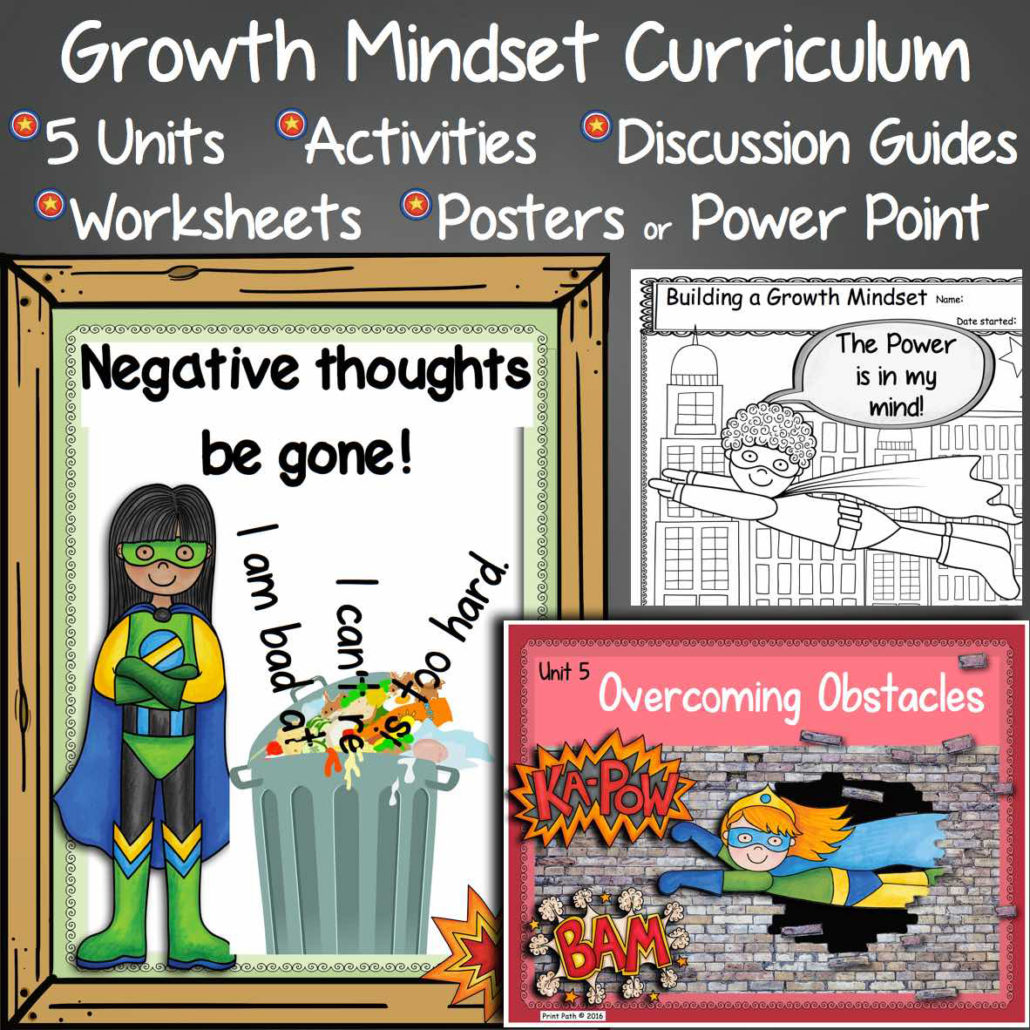How to Change from a Negative to a Positive Mindset
 How to Change from a Negative to a Positive Mindset
How to Change from a Negative to a Positive Mindset
If your students (or yourself) suffer from low self-confidence, they may be stuck in some negative mindsets that are affecting the way they think about themselves. Students with special needs can get stuck in a negative mindset leading to a lot of “always” or “never” talk, creating a sense of entrapment and hopelessness. It is important to encourage students to change from a negative to a positive mindset. Here are some examples of negative mindsets that can lead to low confidence.
“I will never get it right.”
Thinking this way can keep them from trying again, or even trying something for the first time. It makes it only too easy to give up.
“Nobody understands what this is like.”
When someone lacks self-confidence, it can give them a feeling of being all alone. They can feel isolated and assume that others have their lives together while they are still floundering.
“I am totally useless.”
When someone lacks confidence, they may feel like they don’t have anything of value to contribute, whether it’s at school or home.
“I am a complete failure.”
No one fails at every single thing; but to a person with low self-confidence, it can sure seem that way. Sometimes, they can feel like everything they’ve ever tried has failed, even if this is not true.
“I could never do that.”
Do your students see someone else with a successful school life and wish they had the same? Instead of being inspired and wanting to improve their school experience, they look at that person and get depressed, thinking they could never achieve what they have.
How Can These Mindsets Be Overcome?
In order to overcome these destructive mindsets that lead to low confidence, it’s necessary to reprogram thought processes. Teach the students to pay attention to negative self-talk and immediately change it to something positive. Here are several examples to change from a negative to a positive mindset.
For example, instead of “I will never get it right,” you could stop that thought in its tracks and think instead, “I have trouble with this, but if I keep trying and seek out the right help, I know I can succeed.”
Rather than, “I could never do that,” think, “I would love to do that! There’s no reason why I can’t accomplish a task if I work at it.”
Encourage Students to Have a Growth Mindset
Encourage students to change from a negative to a positive mindset by using a growth mindset. A growth mindset was developed by psychologist Carol Dweck who explains mindset as a self-perception or “self-theory” that people hold about themselves. For example, it is believing that you are smart or not smart, good athlete or bad athlete, good at knitting or stink at knitting. This type of mindset can have a profound effect on learning achievement and skill acquisition.
Carol Dweck explains mindset further comparing a fixed mindset to a growth mindset. According to Dweck, “In a fixed mindset, people believe their basic qualities, like their intelligence or talent, are simply fixed traits. They spend their time documenting their intelligence or talent instead of developing them. They also believe that talent alone creates success—without effort.” In comparison, Dweck explains that “In a growth mindset, people believe that their most basic abilities can be developed through dedication and hard work—brains and talent are just the starting point. This view creates a love of learning and a resilience that is essential for great accomplishment.”
Overall, her research revealed that when students learned through a structured program that they could “grow their brains” and increase their intellectual abilities, they did better. In addition, having children focus on the process that leads to learning (like hard work or trying new strategies) fosters a growth mindset and its benefits.
The way we respond to students learning effects how they learn. One of the examples Dweck provides is instead of simply responding “Good effort” when a child is trying to learn something new but struggling, try responding “The point isn’t to get it all right away, the point is to grow your understanding step by step. What can you try next?”
A growth mindset is not just about effort. Students need to apply effort of course, but they also need to discover new strategies and ask for help when needed. This helps students to face challenges head on and understand that setbacks occur on the path of learning.
Remind students it is okay to ask for help to overcome a negative mindset. But like everything else in life, you can do it if you set realistic goals and have confidence in yourself!
Growth Mindset Curriculum: This Growth Mindset curriculum, created by Thia Triggs, school based Occupational Therapist, includes 5 units that will help you to support your children in developing a Growth Mindset FIND OUT MORE.
Read more on:
How to Help Develop Self-Efficacy in Children
What is reflective journaling?
FREE Growth Mindset Coloring Pages
Reference:
Dweck, C. Carol Dweck Revisits the ‘Growth Mindset’. Education Week. Retrieved from the web on 4/20/17 at http://www.edweek.org/ew/articles/2015/09/23/carol-dweck-revisits-the-growth-mindset.html
Hidden curriculum (2014, August 26). In S. Abbott (Ed.), The glossary of education reform. Retrieved from http://edglossary.org/hidden-curriculum.



